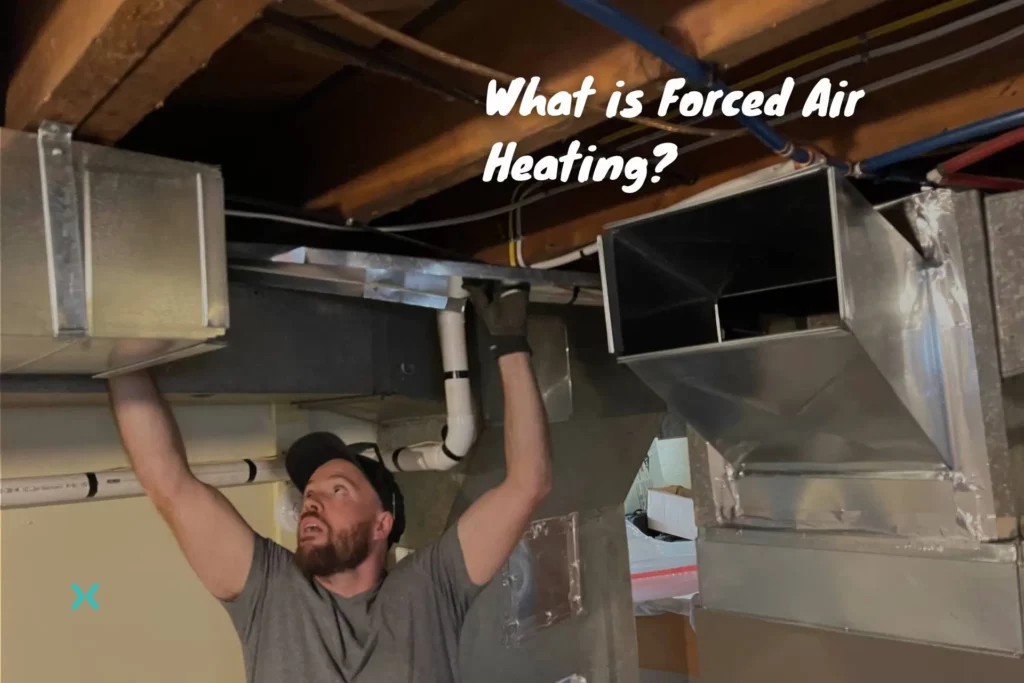When it comes to building a new home or doing a significant renovation, you’ll have to decide how you want to heat and cool your home.
The options you will have for heating your home are a furnace, boiler, electric baseboards, or a heat pump. So, what is forced air heating?
Table of Contents
⭐ What is Forced Air Heating?
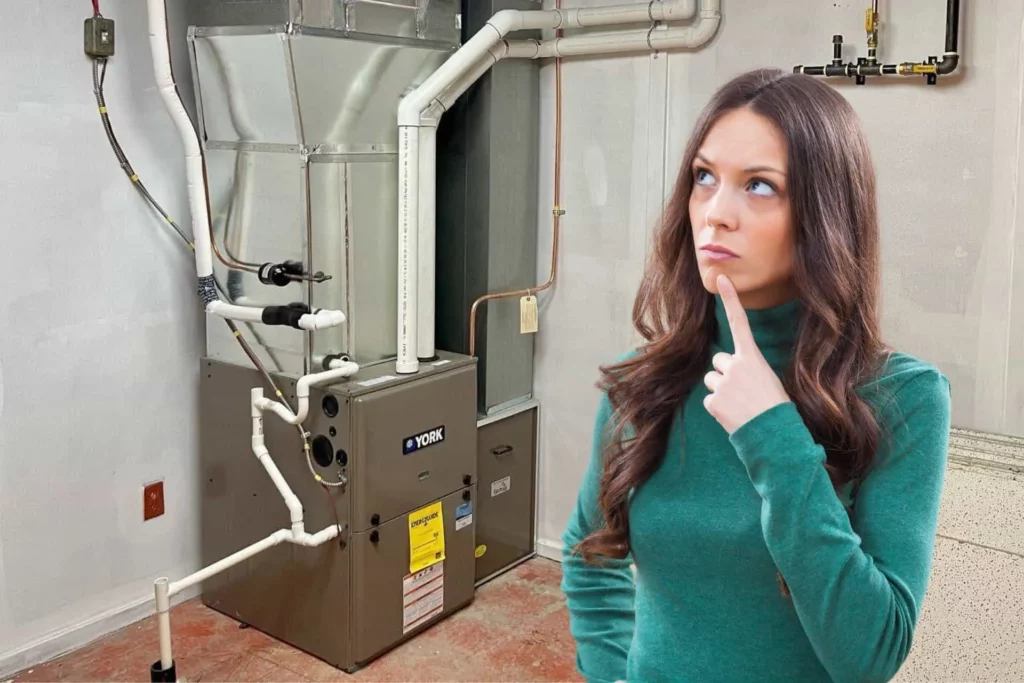
Forced air heating uses a duct system to distribute warm air throughout your home.
The heating source could either be a furnace, boiler, electric air handler, active solar heating, or heat pump, and all options would require a blower assembly, return air ducts, and supply air ducts to distribute the conditioned air effectively.
Related Reading: Ductwork Installation Guide For Homeowners
⭐ Parts of a Forced-Air Heating System?
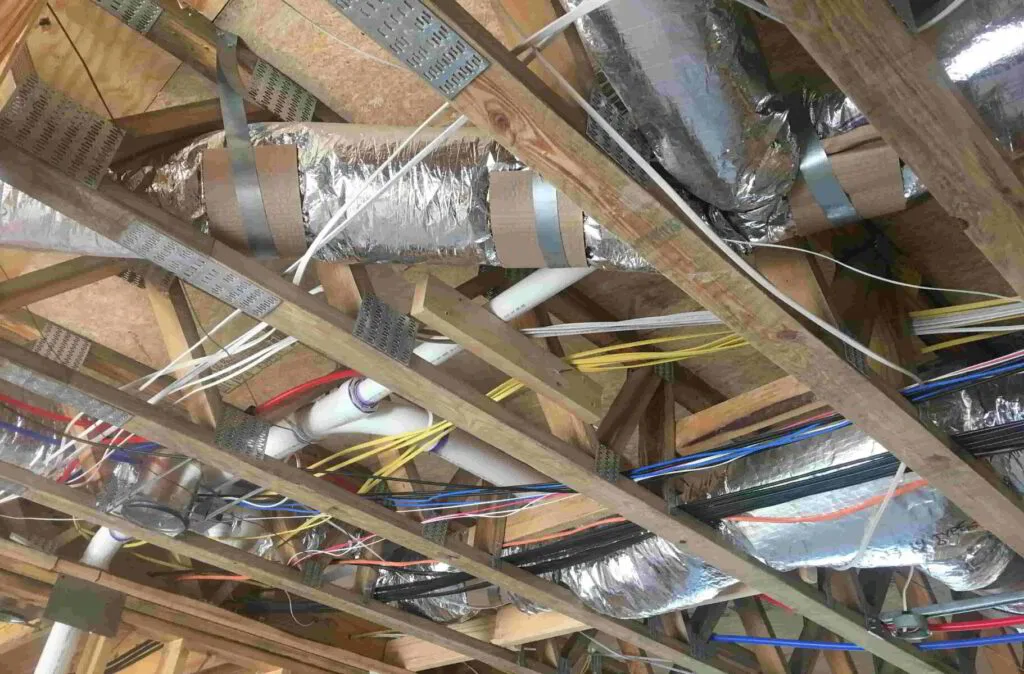
It would be simple to confuse the parts of a furnace with the parts of a forced-air system, but not all forced-air heating systems use a furnace to create heat and distribute the warm air.
Below I’ll list the parts of a forced-air system.
- Heating Source
- Air Distribution System
- Air Filtration System
- Supply Air Plenum
- Supply Air Ducts
- Supply Air Registers
- Return Air Plenum
- Return Air Ducts
- Return Air Registers
- Temperature Controls
Optional components of some forced-air heating systems:
- Zone Dampers
- Zone Controls
- Internal Duct Booster Fans
- Fresh Air Intake
⭐ How Does Forced Air Heating Work?
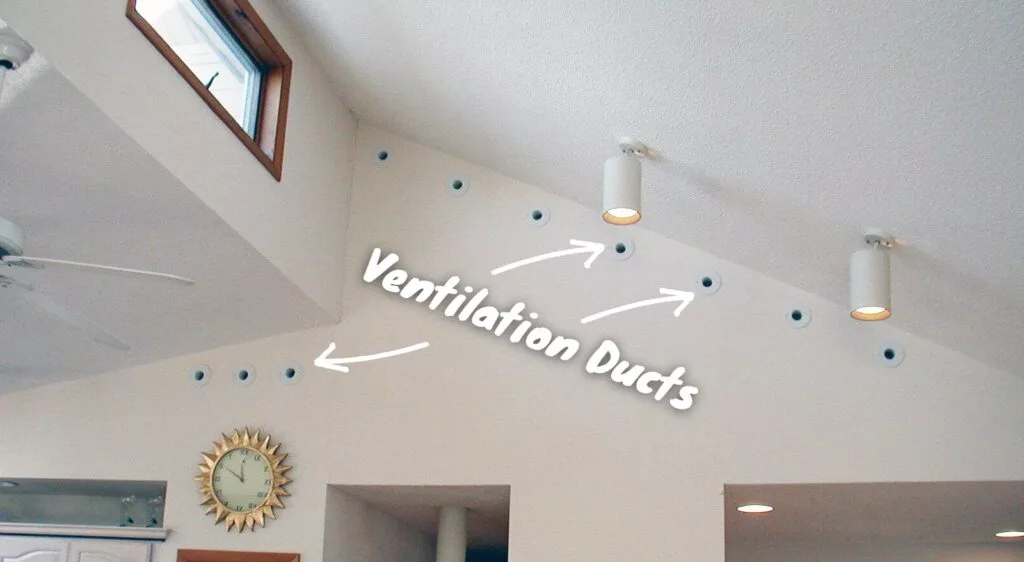
Forced-air heating systems use an air distribution system that includes a blower assembly, ductwork, and a heat exchanger.
The heating system produces heat when the thermostat signals that the occupant is requesting a higher temperature in the space.
Once the heating system starts generating said heat, the blower assembly turns on and begins to suck air from the cold air return ducts, pushing the warmer air through the supply air ducts.
⭐ Pros and Cons of Forced-Air Heating Systems
➕ The Pros of a Forced Air System
Energy Costs
Forced air systems tend to provide a more comfortable and consistent temperature throughout the entire home, and therefore occupants tend to have lower thermostat setpoints than if they used a ductless heat pump.
Check out this website about estimating energy use.
Heating Time
The amount of time forced air systems take to provide a consistent temperature throughout the home is significantly less than if a radiant system or heat pump were to be used.
Easy to Install
This refers to replacing a furnace or adding an AC system.
Comparing the installation process of a completed forced air system to any other heating system can be considered fairly challenging.
Reliability
Forced air systems are considered to have fewer moving parts than other heating systems like ductless heat pumps and, therefore can be seen as more reliable.
Forced air heating systems are also located inside instead of outside, like a heat pump, which means they aren’t affected by extreme weather.
Air Filtering
Adding an air filter, UV filters, air-ionizers, and HEPA filters to forced air heating systems allows you to purify all of the air in your home as it gets heated.
Air Conditioning
The cost to install air conditioning in a home without a forced air heating system is significantly higher than if you had one.
The difference is that you would only need to add the air conditioning portion of the system instead of adding air distribution.
➖ The Cons of Forced Air Systems
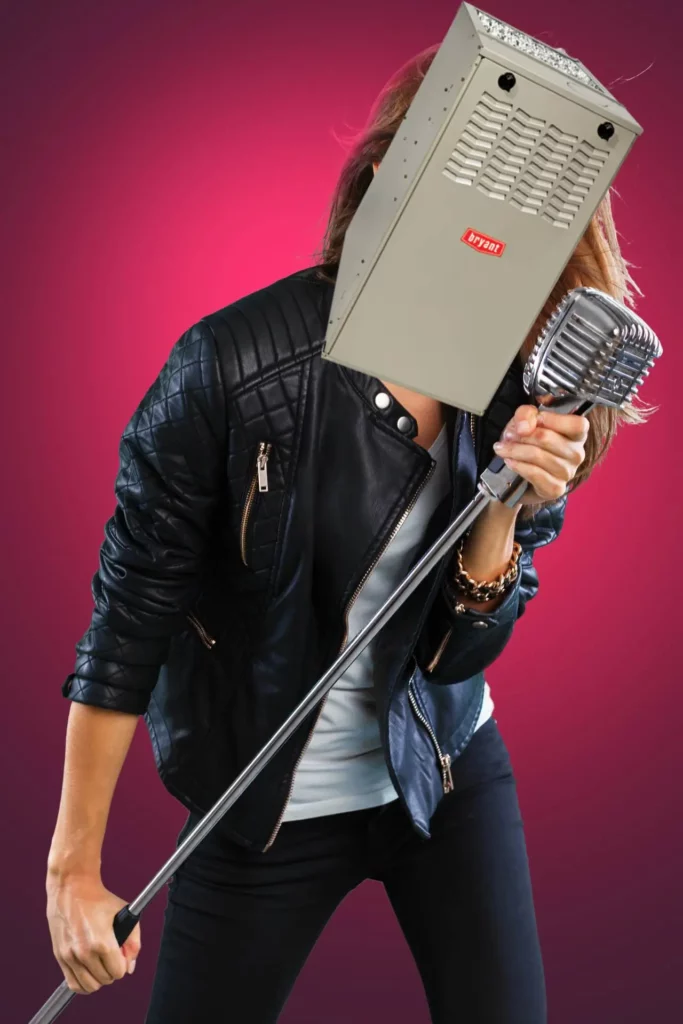
Noise
Forced air systems are just that, a system to force air through air vents.
The problem is that when that air gets forced through those vents, it can be loud, but I will say that the amount of noise is based on how well the system was designed.
Air Ducts
All I really need to say here is “BULKHEADS.”
The standard size of a supply and return air branch will range from eighteen to twenty-four inches wide and eight to twelve inches tall.
You basically need one of each running the entire length of your home, so that means a bulkhead up to four feet wide and one foot tall.
If you don’t like bulkheads, I guess you can just increase the height of your basement by another foot.
Central Control
This isn’t always true, but in most cases, a home will only have one location for the thermostat, which means that the temperature in your home could be different based on where you are (think basement vs. main floor).
Installation
Installation of new forced air heating systems would include the cost of the ductwork, the heating system, the air distribution system, and many other components.
The cost for all these components can be significant ($20,000 or more, based on the size of your home).
Related Reading: HVAC Duct Calculator
⭐ How to Maintain a Forced Air Heating System
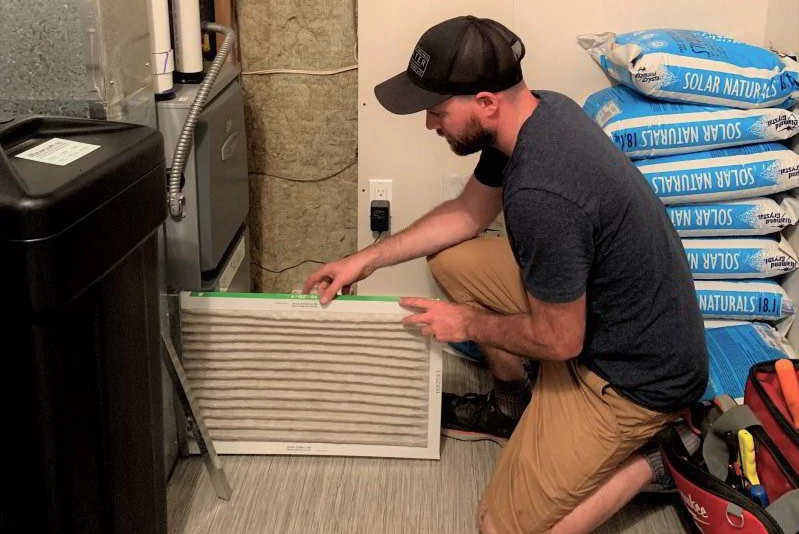
The maintenance that should be performed quarterly on forced air systems would be changing your air filters, annually would include mechanical inspections, and every 5-7 years (depending on your specific home) would be to get your ducts cleaned.
⭐ Is Forced Air Heating the Right Solution for You?
To determine the correct heating system for your home, you need to consider a few things before even thinking about your personal priorities.
The first thing to consider is the energy source (electricity, natural gas, propane, oil, wood, etc.), whether you live in a climate that requires an air conditioner to stay comfortable, and the third is the air quality where you live.
✔ Fuel Source
The only fuel source I wouldn’t recommend using forced air for would be electricity unless you plan on using a heat pump.
If you have natural gas in your area, I would recommend a gas furnace for a forced air system.
✔ Climate
This is simple, do you want central air conditioning? If the answer is yes, then forced air systems are recommended.
✔ Air Quality
There are two factors to consider here, the air quality in your area and your personal situation regarding air quality (allergies and sensitivities).
If you have bad allergies or want to ensure that you have the cleanest air possible in your home, then your best choice for a heating system is a central heating system.
If you’re considering adding air quality products to your forced air system, I recommend talking to multiple highly rated HVAC contractors to get their thoughts on what works best in your area.
Where I’m located, we usually recommend adding either UV lights or air ionizers to forced air systems.
⭐ How To Find The Best Forced Air Heating For Your Home
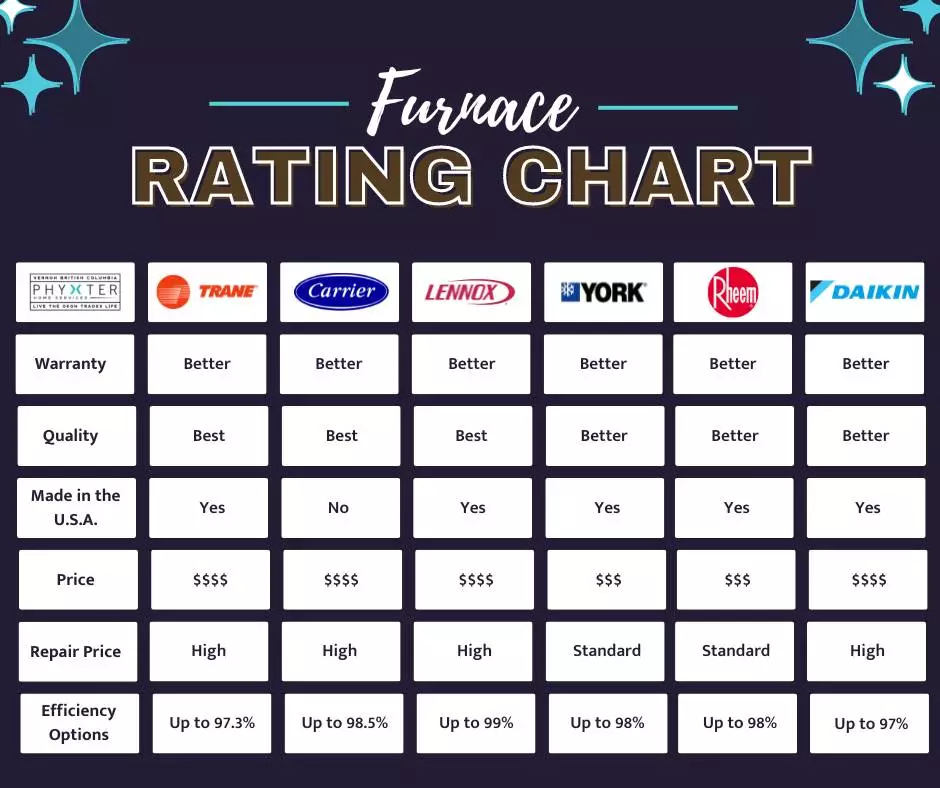
✔ Check out the AFUE Rating or Energy Efficiency Rating
The AFUE rating is how heating systems that use combustible fuels rate how efficient they are.
If a gas furnace has a rating of 97%, then 3% of the fuel you buy does not get turned into heat for your home.
If you have an electric furnace, then 100% of the electricity you buy gets turned into heat for your home…
But you’ll have to consider the cost of electricity vs. other fuels before determining that 100% is better than 97%.
If you don’t understand what I’m talking about, you should consult your favorite local HVAC contractor.
🧰PRO TIP: Depending on your local climate, heat pumps can be considered three times (or more) efficient than an electric furnace. Ask your HVAC technician about the equipment Co-efficient of Performance (COP).
✔ Use the Right Type of Fuel
Get the opinion of multiple highly rated and experienced HVAC companies.
You have more to consider than just electricity or natural gas costs.
The efficiency of specific forced air systems relies on the average local temperatures, which means in some areas, a heat pump would be the best choice, whereas in colder climates, a natural gas furnace forced air system could be the right answer.
Deciding on whether a furnace or heat pump is right is a tough one, so get the opinion of some experienced people.
✔ Choose The Right Sized Furnace For Your Home
This is so important when choosing any type of HVAC system.
If your heating or cooling system isn’t sized properly, the efficiency will be severely affected, and the system’s ability to condition your space effectively will be as well.
Not only that, but if your contractor can’t do a proper heat load calculation, they may oversize your equipment, costing you thousands.
⭐ My Final Thoughts on What is a Forced Air Heating System.

It’s pretty simple. As I described in this article, a forced air heating system is a system that forces air through a duct system to each of the rooms in the home or building.
Choosing whether it’s the right home heating system for you should 100% be discussed with multiple experienced HVAC companies.
Want to learn more about furnaces, feel free to check out our furnace articles.

